How to pole plant: find rhythm and flow in your skiing
We consult a pro skier to find out exactly how to pole plant to unlock your best turns ever
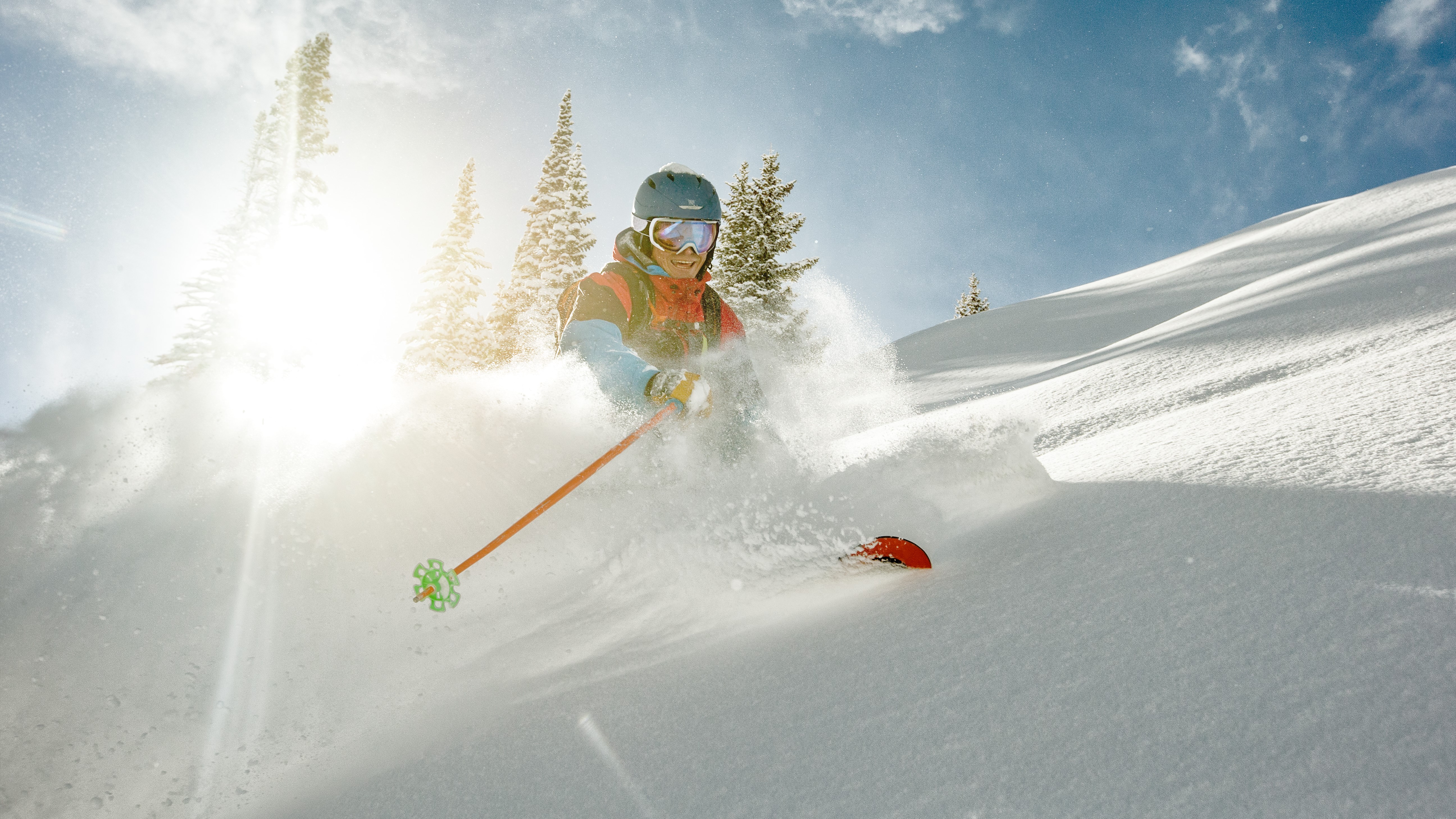
As a skier, there are few things more satisfying than making really good turns. The feel of your skis gliding across the snow and the sound of your ski jacket making that swish swish swish sound as you plant your poles. Except that many of us don't actually know how to pole plant.
I don’t have any actual data on this, but I’m pretty sure that pole planting is something that a good number of skiers are faking. The fake pole plant, according to ski instructor Warren Smith, is the one where your pole just brushes across the snow ineffectually while you make your turns entirely with your lower body. I’m familiar with it, because it’s the one I’ve been doing for 20 years, until I got to spend a few days learning to ski properly with Smith on a recent media trip with Helly Hansen.
“Having a pole plant gives you a real advantage. It’s the one thing that helps you feel balanced and can give you a lot of confidence on initiations of turns,” explains Smith, who runs a ski academy in Verbier and offers online tutorials for skiers.
It’s no wonder that a lot of skiers don’t know how to pole plant. After all, when you’re taking your first couple of ski lessons, you won’t use poles at all. Then you get out on the hill and, unless you keep taking improvers lessons, you just grab some poles and copy what it looks like other skiers are doing. The result is the fake pole plant, which ultimately means you’re lacking in strength and stability in your turns.
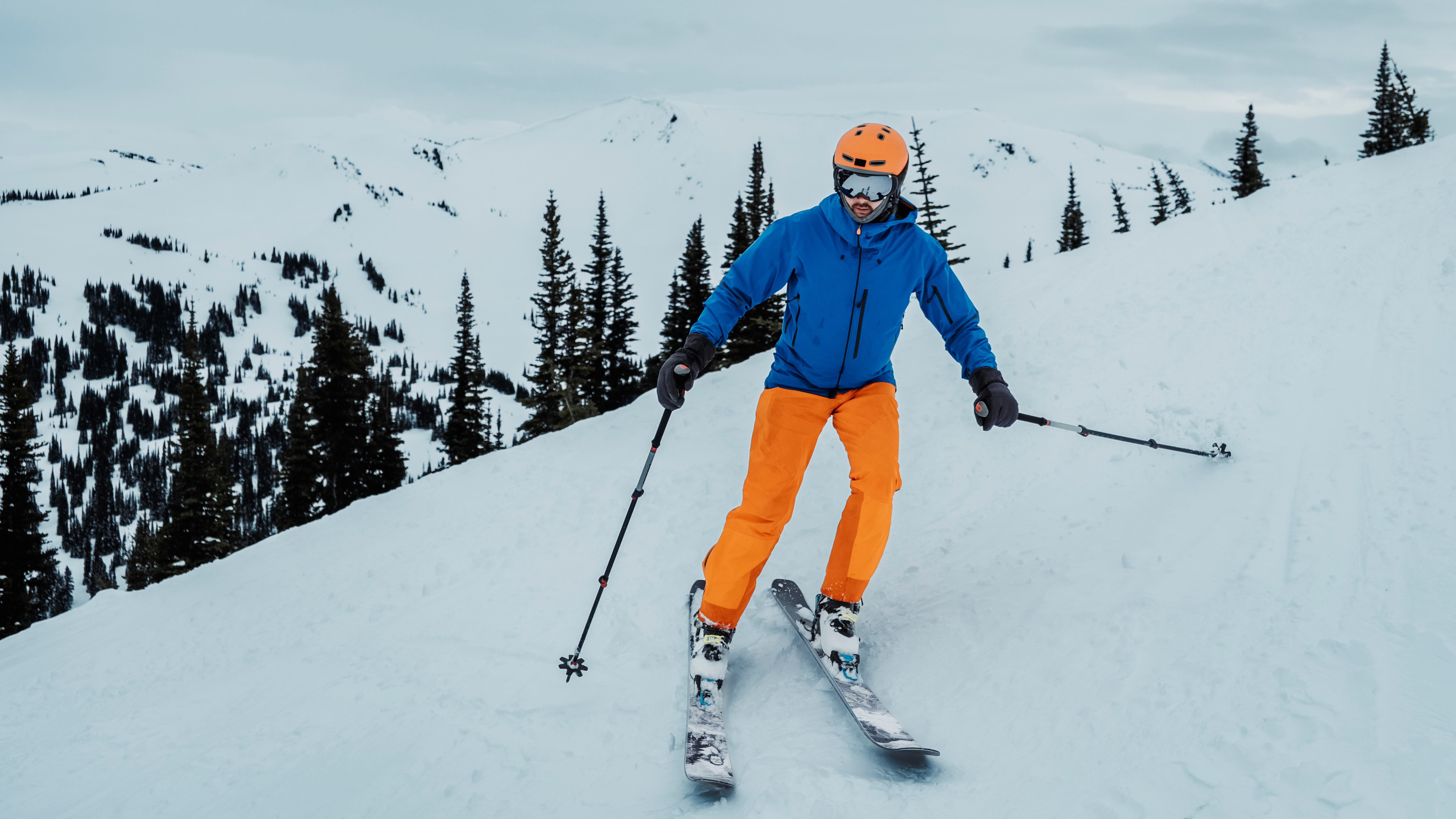
It’s been 20 years since my first ski lesson, so my memory on the matter is admittedly a little hazy, but I don’t recall ever receiving instruction on what to do with my poles. Making matters worse, I have one separated shoulder thanks to a bad wreck on my bike years ago and the thought of stabbing my pole into the snow while I’m executing a turn at 20 mph or faster is frankly terrifying.
In reality, after four days of focusing on proper pole planting, the only issue I have in my upper body is that my wrists, forearms and shoulders feel like I’ve been doing pushups and pullups all week, while my legs are in surprisingly good shape for someone who hasn’t skied in nine months. This is because I’ve been holding my arms out properly non-stop, which on its own is hard work, and thrusting my pole into the snow with actual force, rather than grazing the surface. The result, in addition to a bonus upper body workout, is that my turns have developed exponentially in the short time that I’ve been here.
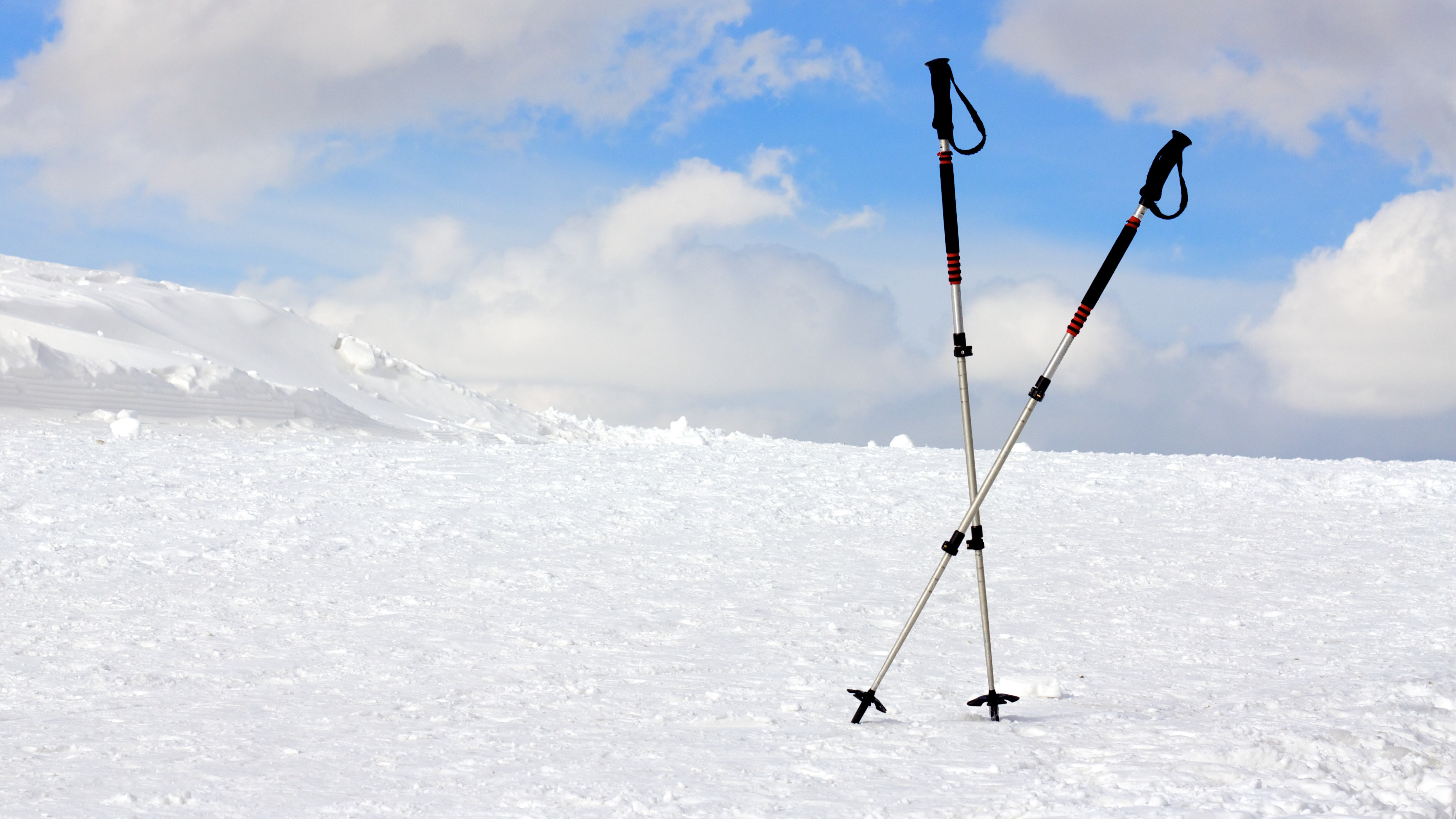
Do you need to pole plant?
It’s not just beginners that ski without poles; there are some fabulous looking ski racers zooming down the slopes without poles these days, and even some who have taken a leaf out of their snowboarding buddies’ book and started leaning so close to the ground they can touch it with their fingers. So, no, you don’t have to ski with poles, but doing so can really improve your technique, and your tactical approach to skiing.
All the latest inspiration, tips and guides to help you plan your next Advnture!
“You're mainly going to use your plant plant in your shorter radius turns,” says Miller, explaining that in longer bigger turns with a bit more speed, your pole plant will actually be relatively light, hardly touching the snow.
“The tighter the turn becomes, usually the more high tempo the pole planting becomes, and the timing of the pole planting becomes the initiation of the turns.”
The other place where proper pole planting comes in very useful is when you’re skiing powder, which as chance would have it is all we end up doing during our few days together, thanks to mother nature. I’m no stranger to skiing powder, though I’m aware that I’ve never done it particularly well. Deep powder is much more unpredictable than groomed snow and, as a result, I’ve tended to use my poles more like crutches to keep me from falling. Using your poles properly when skiing powder does help with stabilization, according to Smith, but it has another purpose too.
“More importantly, it gets the timing right and it really helps with the rhythm and flow when you’re trying to ride through the powder snow.”
When you get it right, your pole planting effectively functions in what Smith calls a Jack-in-the-box action, meaning that it initiates your turn immediately and methodically.
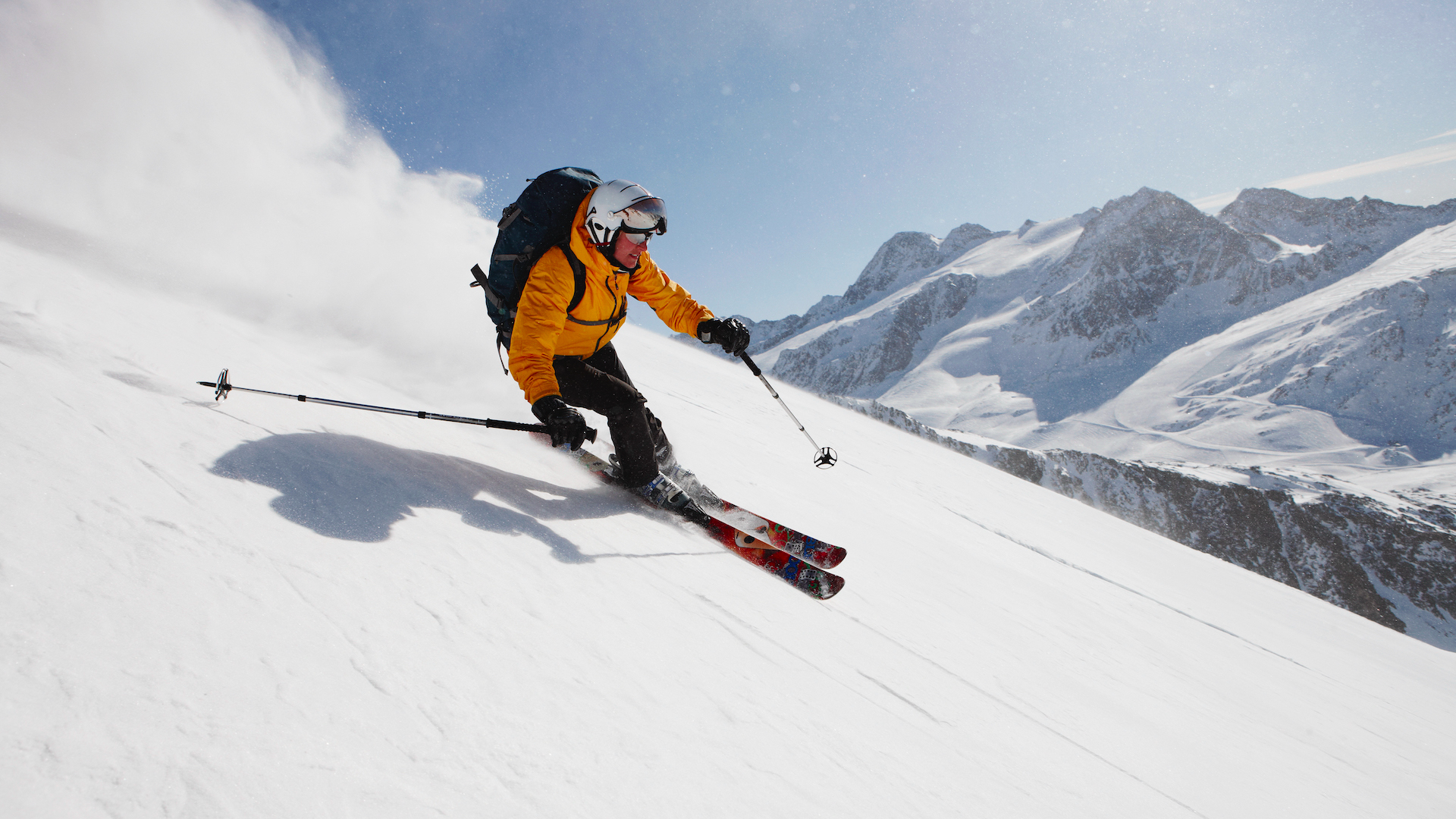
What does a pole plant look like?
The first step in correct pole planting, according to Smith, is to get your posture in order. This is a good thing to practice before you actually start heading downhill, and the two of us spend a fair bit of time going over exactly how I need to hold my arms.
“If the arms aren’t in the right position, the pole plant can actually cause you some issues,” he warns.
Smith points out that I, like a lot of people, hug my elbows into my body and when I plant my pole. If I do plant my pole with my elbow in close to my side, it makes it easier for my arm to rotate back causing me to lose power, and probably increasing my chances of the shoulder injury I’m trying to avoid. Instead, practice holding your arms out in front of you with your elbows slightly bent, and taking your elbows out wider than your shoulders. If you look at yourself in the mirror, your arms should make a 45 degree angles so that there are two triangles under each arm.
Once I’ve got the arm position right, Smith grabs one of my poles and easily pulls it out to the side. He instructs me to essentially lock my shoulders in places (do this using your lats, if you’re an anatomy nerd) so that he can’t move the pole. This means that when the snow grabs my pole, my shoulder doesn’t get wrenched and I retain control. When it comes time to plant your pole, the majority of the movement doesn't come from your shoulders at all – don’t raise your arm up high like you’re about to plunge a dagger into your enemy – but in fact it largely comes from your wrist.
“In reality all you need is a movement of your wrist. It keeps your arm stabilized, keeps your upper body calm and allows you to focus on your skiing.”
Grab your ski poles and try practicing the movement now, just flicking your wrist to rise and jab the pole down, and you can imagine why my wrists and forearms were so sore after four days.
Finally, there’s the issue of timing when it comes to pole planting. Plant your pole too early and your arm will be behind you, and of no use to you, by the time you make your turn. Plant it too late and it doesn’t give the power or precision. Plant your pole too close to your ski and your ski might hit it. Leave your pole in too long and suddenly you’re skiing with your arms behind you again, which keeps you in the back seat and destabilizes you. But keep your arms forward and your elbows out and use a flick of the wrist to stab your ski pole into the snow forward of your ski boot and a little out to the side and you’ll discover that Jack-in-the-box quality to instigate each turn at the perfect moment to find rhythm and flow.
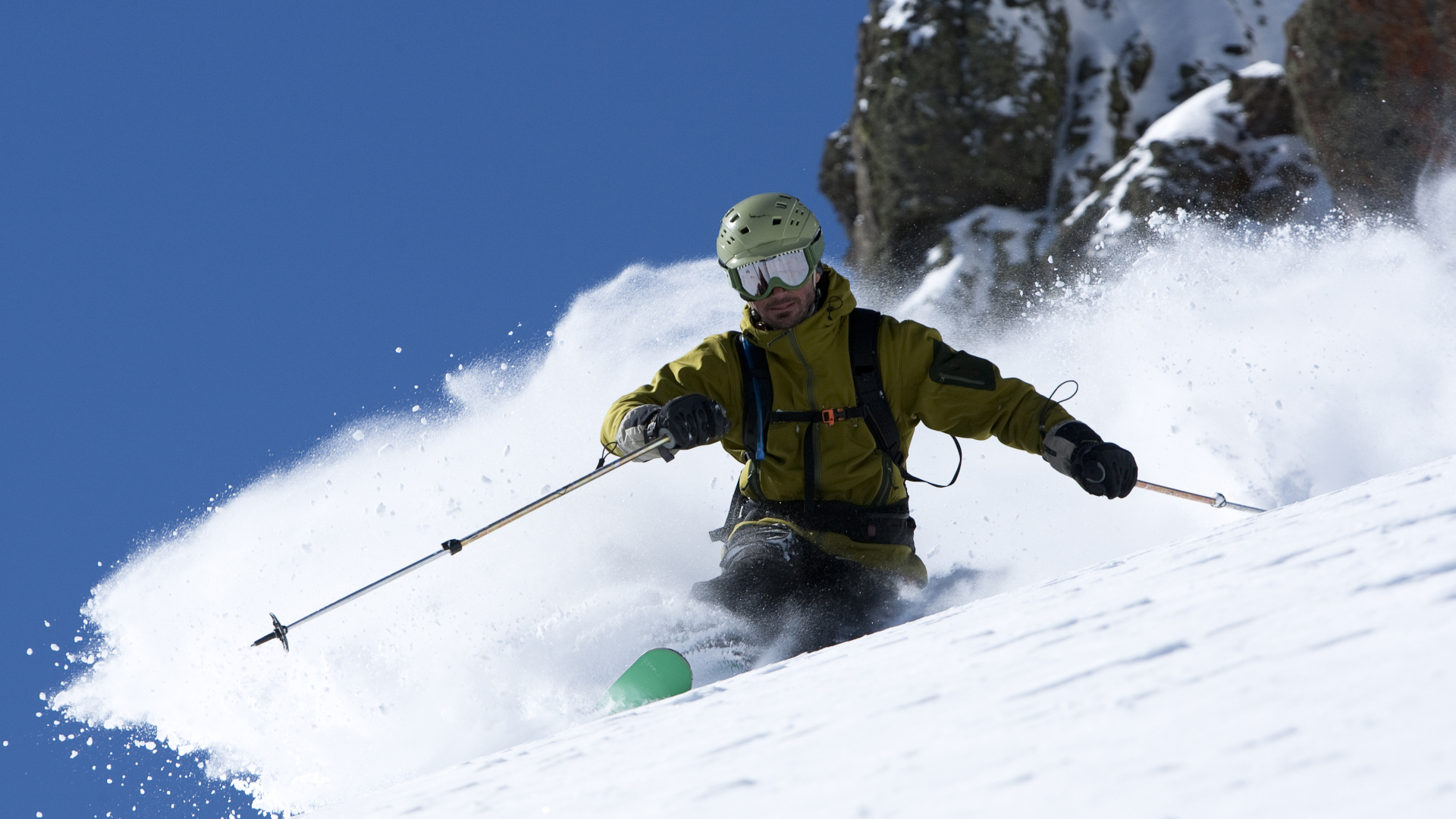
How to pole plant
It’s a good idea to implement a new technique like this in a controlled environment, as in not when you’re skiing really fast or in deep powder. Find a piste with a steep section where you have lots of room off to one side to practice using your pole plant to initiate parallel turns. Once you’ve become comfortable with the technique, try it in your regular skiing.
- Start with your skis perpendicular to the fall line, not pointing downhill, and begin traversing the slope.
- Hold your arms out in front of you, a little wider than your body with your elbows slightly bent. Engage your lats to keep your shoulders locked in place – if someone were to try to grab the pole and pull it out to the side, they wouldn’t be able to.
- When you’re ready to make a turn, round your shoulders just a little, reach forward and use your wrist to jab your downhill pole firmly down into the snow, forward of your ski boot and out to the side of your ski. This action initiates your turn as you bring both hips over your downhill ski and start to turn your uphill shoulder and hip downhill into the turn.
- Keep the pole in place as you complete your turn, but make sure to pull your pole out of the snow as soon as you are facing the other direction so that your (now uphill) arm isn’t left behind your body as you start traversing again.
- Keep both arms forward, and ready your downhill arm to plant your pole for your next turn.
- Best ski goggles: for great vision and protection
Julia Clarke is a staff writer for Advnture.com and the author of the book Restorative Yoga for Beginners. She loves to explore mountains on foot, bike, skis and belay and then recover on the the yoga mat. Julia graduated with a degree in journalism in 2004 and spent eight years working as a radio presenter in Kansas City, Vermont, Boston and New York City before discovering the joys of the Rocky Mountains. She then detoured west to Colorado and enjoyed 11 years teaching yoga in Vail before returning to her hometown of Glasgow, Scotland in 2020 to focus on family and writing.

